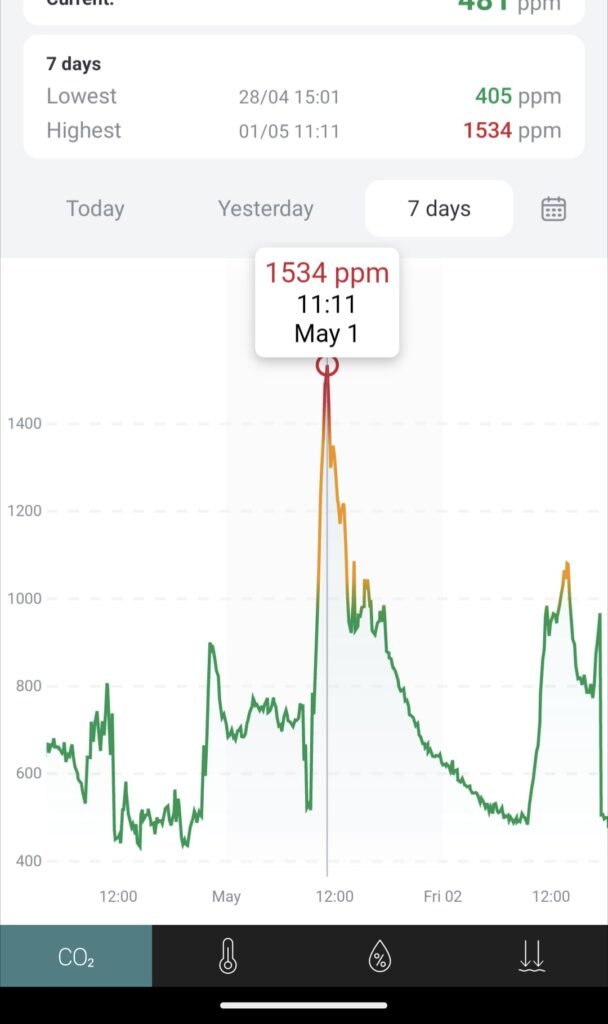How a Pregnancy—and a Chess Match—Changed the Air I Breathe
05/05/2025
When my partner got pregnant, I naturally started paying more attention to our environment at home. I wanted to make sure everything was safe and healthy—including the air we were breathing. That’s when I bought a CO₂ meter. I wasn’t expecting anything dramatic—just a way to check that everything was within safe levels.
But I was in for a surprise.
The Bedroom Shock
I started by checking our bedroom at night. While we slept, the CO₂ levels rose much higher than I expected. The room was closed up for warmth, with the windows shut. It turns out that CO₂ builds up very quickly in an unventilated room—especially since we are breathing out air that contains about 3% CO₂ (around 30,000 ppm). That’s 80 times higher than what’s in fresh outdoor air.
It didn’t take much for the room to exceed 1500 ppm, which is already considered a level that can impair thinking and cause fatigue. On cold nights, I suspect we even went over 2000 ppm.
My Home Office Was Worse
The real shock came when I measured my home office—the place I work every day. It’s a small room, and to block out noise, I often kept both the window and the door closed. That turned it into a CO₂ trap.
I realized I had been spending hours each day in stale air, slowly draining my concentration and energy. I was constantly fatigued, especially in the afternoons. Worse, I started feeling like I hated my job. Only later did I understand that it wasn’t the work itself—it was the air I was breathing.
Measuring Made the Invisible Visible
Once I had the meter, I could see the problem. I learned how fast CO₂ rises in a closed room, and how quickly it drops when I simply open the door or crack a window. It became clear: ventilation isn’t optional—it’s essential.
Balancing ventilation with temperature is tricky (especially in winter), but now I could finally understand the trade-off.
When I Realized It’s Not Just Me
What made me truly realize how unaware most people are about this issue was a league chess match I played. Ten players and a captain were packed into a small room for over three hours—with doors and windows shut. I didn’t have my meter with me, but I’m certain the CO₂ went well over 3000 ppm. That’s the kind of level that can give you a headache and sap your mental sharpness.
Later, a friend from the chess club—who works in a small office with no window—asked to borrow my meter. He did a test replicating his usual conditions: two people, door and window closed. CO₂ levels shot up quickly. Here is the image of the reading:

1534 ppm! Just after two hours of work, at which point he stopped the test. He opened the door and brought the level down to 1200, which is still high enough to impact focus and performance.
Why I’m Starting This Project
That’s when it clicked: most people have no idea what they’re breathing. They feel tired, sluggish, frustrated with work—but never suspect the air around them.
So I’ve started this project to help. Measuring your indoor CO₂ is simple, low-cost, and can lead to big improvements in how you feel and function—at work, at home, and even while you sleep.
If we can help people breathe better and think clearer with just a simple check, that’s a win worth chasing.
